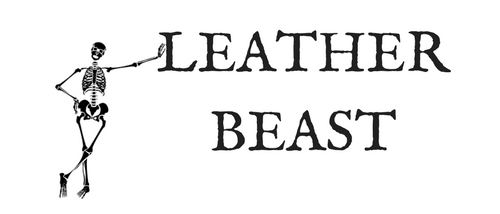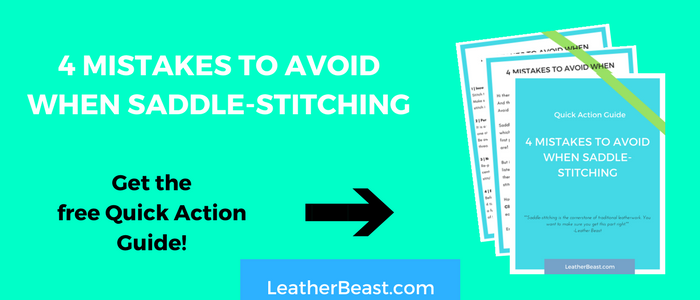4 Mistakes to Avoid When Saddle-stitching
Saddle-stitching can be tricky business if you’re not quite sure which tools you should be using, how exactly to saddle-stitch in the first place or what the common beginner leatherworking pitfalls are!
But it doesn’t have to be a tricky process. Below i've listed 4 of the most common beginner mistakes (believe me, been there done that, don't want to go back!) and how to avoid them when saddle-stitching.
(**Don't have time to read the post? Click below to get the free Quick Action Guide for this post in a bulleted format.)
1 | Inconsistent stitch tension
Inconsistent stitch tension is a major no-no that you want to avoid when saddle-stitching. Stitch tension refers to how tightly you pull your threads during and after each stitch.
If the tension is inconsistent, meaning some stitches are pulled tighter then others, then that tightness or looseness is going to show up in your work in the form of puckered stitches or loose stitches.
Instead, when you pull the threads after each stitch make sure you are pulling with the same gentle force each time and that each stitch is consistent.
Not to tight and not too loose.
2 | Puncturing threads with your needles
Obviously, you don’t want to be doing this. During saddle-stitching you’ve got your 2 needles on either side of your work and with each stitch you’re passing these threaded needles past one another inside the work ultimately crossing them over to the opposite sides of your work.
When you're first learning how to saddle-stitch one of the most common mistakes is that one of your needles 'runs into' or punctures the thread that it is passing. So when you’re saddle-stitching, make sure and be aware that your needles are not piercing or running through the other thread. You want them to play nice and wave as they pass by each other.
If your needles go through the stitch hole easily then chances are, you have not punctured either thread. However, if one of the threaded needles sticks and the stitch cannot be completed, then you have probably pierced your thread and you need to stop and fix the mistake.
3 | Not moving your project in the clam or pony as you go
Whether you’re using a clam or pony the message is the same. Continuously re-position your work in your clam/pony as you stitch. You want your work to be centered and the clam/pony to be cradling it at the point where you are stitching.
You don't want to be stitching a part of your wallet for example, and have it hanging outside of the jaws of the clam. This leaves your work floppy and could affect your stitching tension, angle of of your awl (if you're using one) and ultimately produce poorly executed stitches.
You work will benefit from being snugly held in place within the clam/pony jaws while stitching. You'll be able to maintain control over your stitches and help keep the tension consistent as well.
4 | Eyeballing the length of thread that you need
That last thing you want to happen is to get to the end of your stitching line, a mere 5 stitches away from finishing and then realize that you don’t have enough thread to complete your line of saddle-stitching.
DOH! #headslap.
This can be a tough one to fix.
Instead, before you cut your thread just remember the 4x rule. Cut a length of thread 4 times the length of your project plus a few inches for good measure. You might end up wasting a few inches here and there, but that is a much better scenario then running out of thread before you can finish you stitching.
Have you ever fallen victim to these traditional leatherworking pitfalls? Lets talk about it in the comment below.

